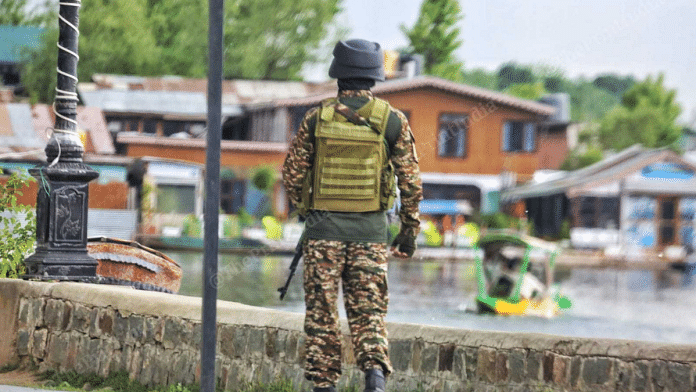New Delhi: During his visit to Kashmir following the Pahalgam terror attack that claimed 26 lives, Union Home Minister Amit Shah was informed that there are over 60 locations in Kashmir—opened to tourists after the abrogation of Article 370—that lack adequate security deployment and are “unguarded” and hence should be closed to tourists to prevent any such future attacks, ThePrint has learnt.
The government, according to sources in the security establishment, was previously “not keen” on closing access to any such locations, as it went against the narrative of “normalcy” in the Kashmir Valley. However, following the Pahalgam attack, it has now agreed to limit access of tourists to these spots.
A source said that there is a possibility that these locations will be opened in a “calibrated manner” later.
In fact, the Baisaran Valley—a popular destination where hundreds of tourists visit the meadow on horseback daily—is one such spot. Traditionally, it opened only during the Yatra season for about two and a half months, from mid-May to July. However, since 2020, the spot has remained open year-round, with over 1,000 tourists visiting daily, multiple sources confirmed.
This is contrary to what the Modi government reportedly told opposition leaders at an all-party meeting on Thursday evening. Local tour operators had opened the route to tourists “without informing the administration, due to which there was no deployment of security personnel in the area”, it said. At the meeting, the opposition leaders had questioned the government over the complete absence of security personnel at the site of the attack.
“Since the last few years the government has been liberal, insisting that all spots should remain open and accessible to tourists as cordoning off any spot would send out the wrong message. These include spots that do not have adequate security deployment needed in case tourists are visiting the spot in large numbers,” a source in the security establishment said.
The source added that on multiple occasions, the concern has been raised with the government to shut these spots.
“All these spots have seasonal deployment,” the source said. “After the attack, a call has been made to close them down for tourists and rightly so.”
‘Chittisinghpora a lesson forgotten’
According to data accessed by ThePrint, over 120 terrorists are present in the Kashmir Valley at the moment. Sixty of them are foreign terrorists, predominantly from Lashkar-e-Taiba.
A second source said that considering the presence of terrorists, it is anyway not advisable for tourists to visit far-flung unguarded spots.
“Moreover, no incident of terror in the past few years doesn’t mean it cannot happen. With the presence of terrorists in the area, there is always a risk. They are always looking for an opportunity to strike and that is what happened in Pahalgam,” the source said, adding that the spot of Baisaran was picked because it does not have a significant security presence.
“The terrorists carried out a recce to identify a spot with good tourist presence and no security. They observed the place for a few weeks and that is how they zeroed in on the Baisaran Valley,” the source quoted above said. “Normally, if there is a security presence, it helps keep them at bay. The terrorists knew that this is a perfect spot as there is no security presence and for any help to reach would take at least an hour due to the terrain.”
A third source stated that following the Chittisinghpora massacre in March 2000—when 35 Sikh men were shot dead in cold blood on the eve of then US President Bill Clinton’s visit to India—clear Standard Operating Procedures (SOPs) were put in place for security deployment
in the Valley during any such VVIP visit, high alert is declared across the region. However, it is definitely a lapse that no such arrangement was put in place in a busy tourist spot like the Baisaran Valley, especially when American Vice President J.D.Vance was on a visit to India, the above quoted second source said.
“Since the Chittisinghpora massacre, there are clear instructions of special security deployment in key locations including major tourist spots in the valley. The idea is to ensure that by putting up deployment, the terrorists are kept at bay,” the source said. “It definitely was a lapse that the deployment was not done in this area considering that over 1,000 people visit the spot on a daily basis.”
As reported by ThePrint earlier, the first team of police and the Central Reserve Police Force (CRPF) took an hour to reach Baisaran Valley in Pahalgam because of the terrain, by which time the bloodshed was already over.
The site was also unguarded despite prior intelligence inputs of terrorist movement in the area and the possibility of an attack on tourists.
On Tuesday, the police control room received the first call regarding the incident at 2.45 p.m. from a woman, following which a team of 45 personnel were rushed to the meadow. The first team that responded to the attack covered 2.5 km of the 7 km stretch on all-terrain vehicles (ATVs) and bikes, travelling the rest over the distance on foot, given the difficulty of manoeuvring vehicles on the path that leads to Baisaran.
(Edited by Tony Rai)






